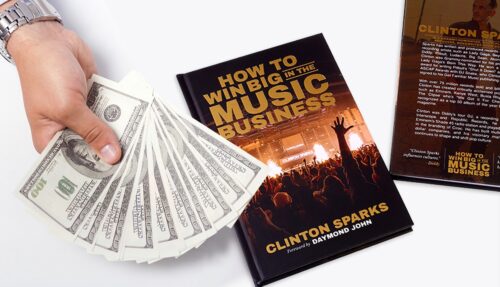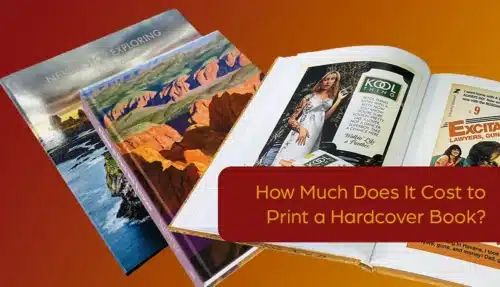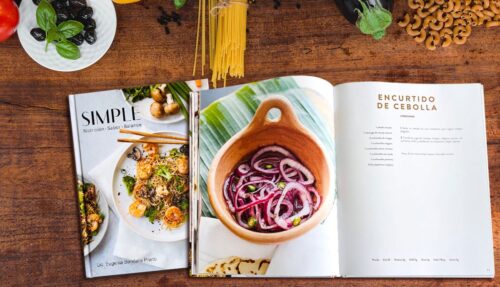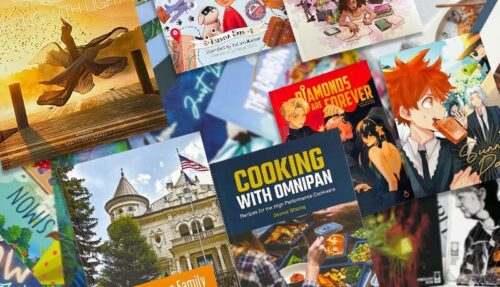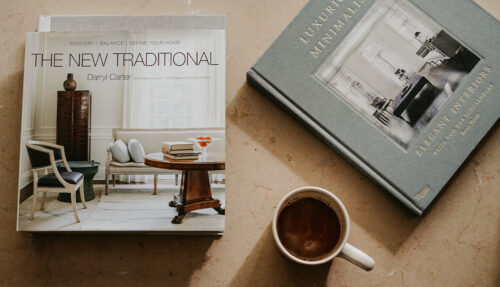For most working artists, getting an art book published by a mainstream publishing house is an unrealistic option; but self-publishing has become a viable alternative. We walk you through everything you need to know to design and print your art book ready for self-publishing.
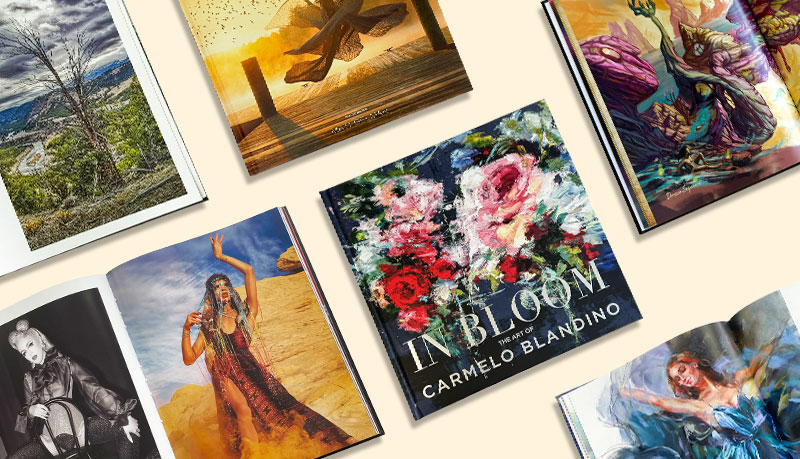
For showcasing your artwork, an art book can be a powerful tool. Whether you’re a seasoned artist or just starting out, self-publishing your own art book can provide many benefits. In this post, drawing on over 25 years of success in the offset printing industry working with mainstream publishers and independent creatives alike, we will explore the process of self-publishing an art book, from design and layout to printing and promotion. We’ll also address some common questions and concerns, such as the best paper, size, and format for your art book. For all the details on our comprehensive art book printing service, find out more here.
What's the difference between an art catalog, a portfolio, and an art book?
But before we go any further, there’s one thing we’ve come across from time to time, which we should clear up at the outset. Not infrequently, a potential client comes to us wanting to print an art book when what they really need is a catalog or a portfolio; or the other way round, they come asking for a catalog or a portfolio and during our talk, it’s clear that an art book would better serve their needs. So, to avoid misunderstandings and offer you the most helpful information we can, let’s explore the differences between an art catalog, a professional portfolio, and an art book first.
Art catalog
An art catalog is typically a souvenir of an exhibition or a specific body of work. It includes images of the work, an artist statement, and an introduction by a curator or other art expert that places your art in a wider context. Catalogs are more focused on the visual aspects of your work and often have less writing than an art book. The pieces are often numbered and may include sale prices. They are limited editions tied to a particular time, place, and event. They are usually limited in page numbers and printed on gloss or matte paper and bound in glued and sewn paperback.
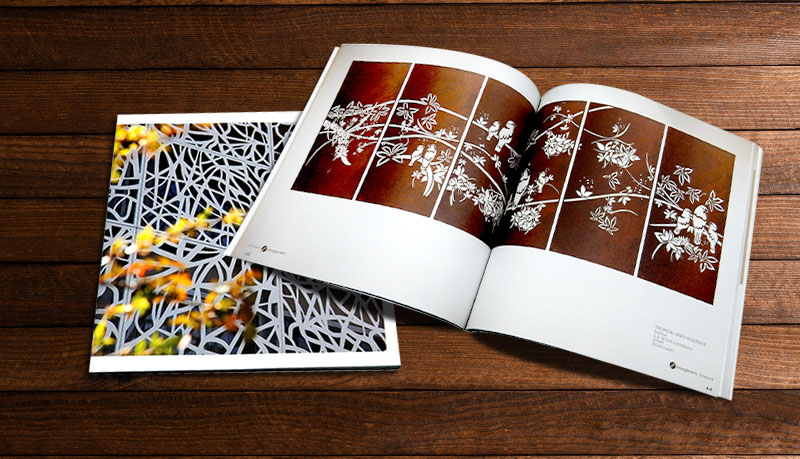
Art portfolio
An art portfolio, while similar in design and style, differs from the catalog in significant ways. For example, its aim is to provide a broad overview of your work organized either chronologically or by theme. It will include a written introduction to you as an artist, your background, experience, and inspirations, but this will be short and sweet; typically under 1,500 words. Each piece is likely accompanied by an “artist’s statement” exploring why you created it and offering personal insights into your process. Again, these will be short and concise, no more than a paragraph a-piece. A portfolio is aimed at presenting your work to gallery owners, exhibitions, art spaces, museums, festivals, corporate bodies and funders, and other places where you might obtain an exhibition or a commission. They will normally have more pages than a catalog, have more text, but similarly will be printed on gloss or matte paper and bound in glued and sewn paperback.
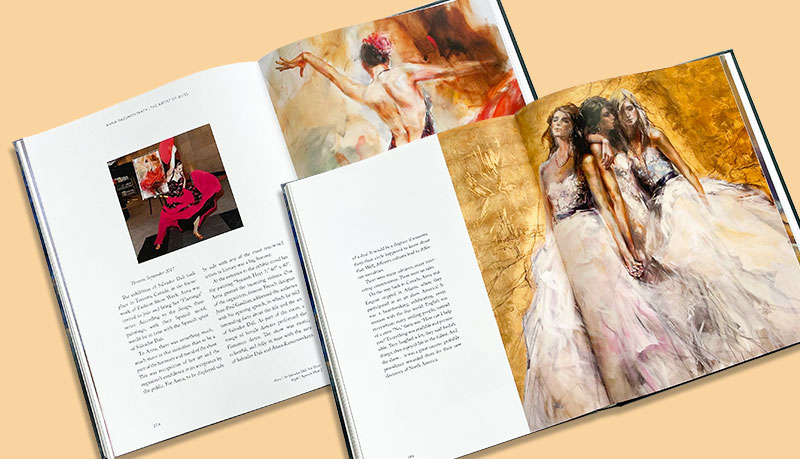
Art book
An art book is a testimony to your work and impact as an artist in the context of history and the contemporary scene. It’s a monument to your creativity, your contribution, and stands as a record of your work designed for posterity. An art book has a narrative flow and typically includes more writing than a catalog or a portfolio. It can tell a story, explore a theme, or venture deeper into your creative process, history, and development as an artist. Art books often provide a more comprehensive look at an artist’s work and can serve as a lasting testament to your artistic journey. The chosen work is usually curated by you, the artist, or by an artistic biographer, and the written content will result from a collaboration between the artist, possibly a ghost writer, and an editor. It’s often printed in large format as a “coffee-table” style book, with hardcover and a dust jacket and quite possibly also a slipcase. It will have special finishes, such as gold or silver foil stamping, embossing, and UV spot coating. It may have painted edges, marker ribbons, and more. In other words, it’s a no-holds barred luxury edition to immortalize your work.
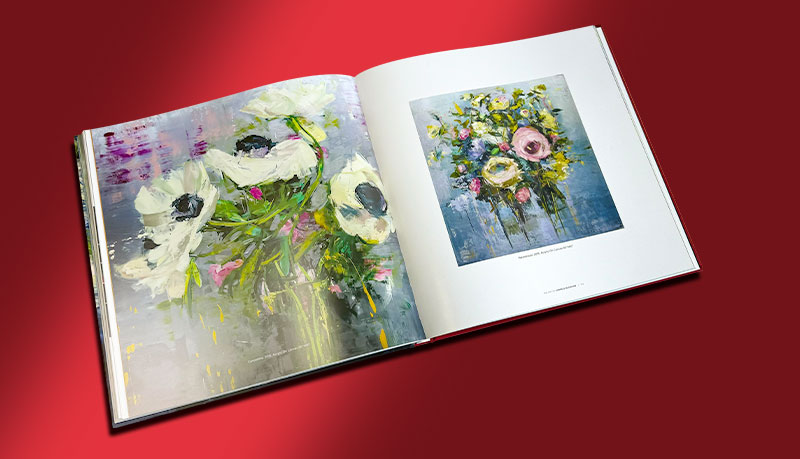
So, while there are obvious crossovers and similarities between art catalogs, portfolios, and art books, they also have significant differences and serve distinct purposes. We’ll assume from this point that, having realized this, you’re still interested in publishing an art book. So now we’ll examine how to create and organize the content of your art book, and then how to prepare your files for printing.
Creating content for an art book
An art book needs two types of content: visual and textual. The text may or may not always refer directly to the visual content, but in most cases, it often will. One question you’ll need to resolve at the outset is which comes first—the selection of the artwork or the text? There are three answers to this question. They are:
- Select the art first, organize it – thematically, chronologically, etc. – and then write a text which explains the thinking and process behind the work, gives biographical and historical context, and guides the reader on a journey through each piece.
- Write the text first, focusing on the artist’s professional biography, the development of their thought, how their style and subject choices have changed over time, and so on. Then, select pieces which illustrate the text and exemplify the points made.
- Work collaboratively with the writer from the outset in open discussions about the textual content and the visual elements to create content which arises as the result of an active dialogue between the text and the artwork.
How you approach this is a matter of choice and your vision for the book. It also depends on whether you’ll write the text yourself or commission a writer to develop the written content for you. Either way, you’ll need to engage an editor and ideally one who already has experience in the art vertical. And once you’ve completed developing and organizing your core content, you’ll need to approach someone else to write a short introduction to the book. We’ll look at that next.
Who should write the introduction?
When self-publishing an art book, finding the right person to write the introduction is crucial. Art historians and critics are traditional options, but you might also consider finding an expert in a field related to the subject of your art. For example, if your art deals with environmental themes, consider approaching a scientist or environmental activist. Likewise, if you can’t find someone with automatic authority or name recognition, don’t worry. There are other options you can explore. For example, you might ask your old school teacher or college professor. A gallery owner where you’ve recently exhibited is another option, or the curator if you’ve had a museum show, for example.
If you’re looking for someone to write an introduction outside of your personal acquaintance, you’ll need to take a professional approach and probably be prepared to offer a commensurate fee. To interest potential contributors in your project, be prepared to discuss your art’s desirability as a subject, deal with their agent, and negotiate reasonable compensation. The standard fee for writing an introduction is roughly one dollar per word, but this can vary depending on the writer’s experience and reputation.
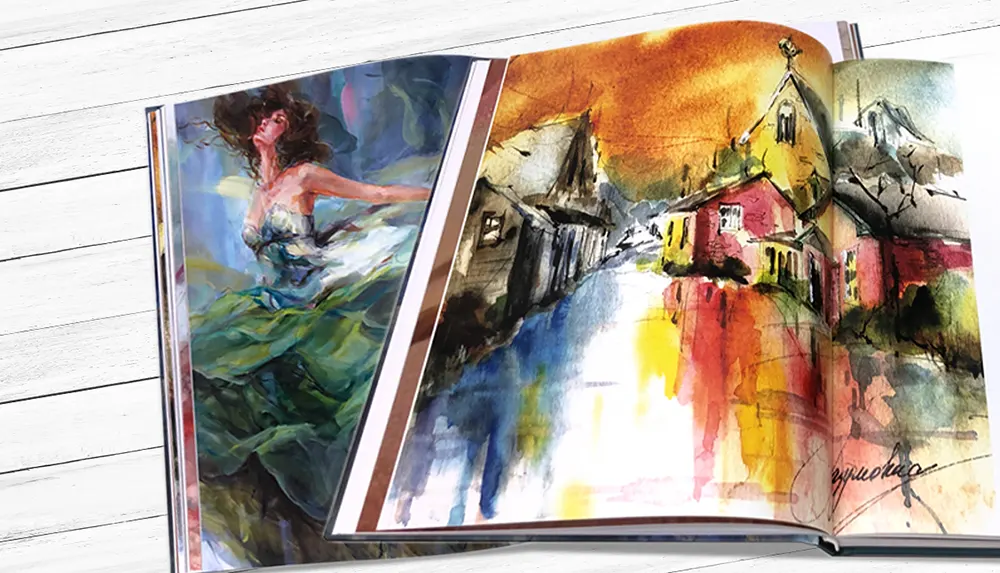
Art book design and layout: DIY or hire a designer?
Having selected your artwork, written and edited your text, and commissioned an introduction, you can tackle the design and layout of the book itself. The question here is whether to take the DIY route or employ a professional book designer. Your choice will depend on your skills, inclination, and budget. Let’s look at both options.
DIY art book design
If you have experience with design software and a good eye for aesthetics, designing your art book yourself can be a rewarding and cost-effective option. Look for inspiration in other art books and don’t be afraid to experiment with different layouts and design elements. We recommend Adobe InDesign and Illustrator for this kind of work (it’s what we use ourselves). If you choose to print your art book with us, then we’ll assign you a named personal consultant as a constant point of contact and you can ask questions and get advice from our expert in-house design team. We also have a range of free book design templates to help you, free file checking, and a host of other advantages to guide and support you while you design your art book.
When to hire a designer for an art book
If you’re not comfortable with design software or simply want a professional touch, hiring a designer can be a wise investment. A skilled designer can help you create a visually stunning art book that showcases your work to its fullest potential. Just be prepared to allocate part of your budget to cover their fees. A professional freelance designer will charge anything from a few hundred dollars up to several thousand, depending on the scale and scope of the project. When choosing a designer, check out their back catalog, client testimonies, and whether they have experience with art book design.
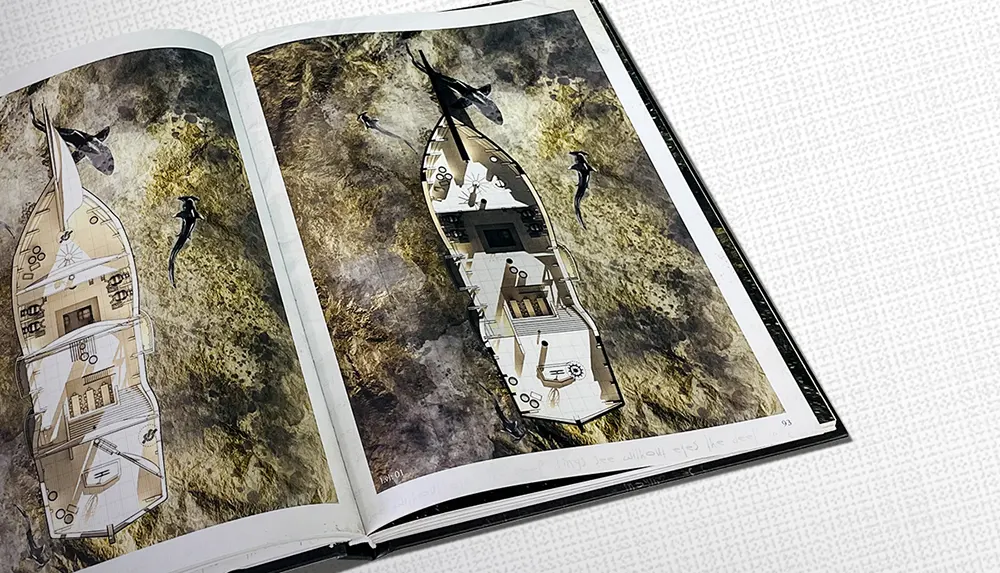
How to get an ISBN and barcode for an art book
An International Standard Book Number (ISBN) is a unique numeric commercial book identifier that, along with a barcode, is essential to get your book into the booksellers’ catalogs and to sell your book in stores and get it placed in libraries. While not strictly necessary to sell on other platforms, getting an ISBN and barcode can lend a sense of professionalism to your art book and make it more accessible to potential buyers. You can purchase ISBNs online from Bowker in the US and from Neilsen in the UK. Other countries have their equivalent organizations allowed to sell and register ISBNs. Once you have your ISBN, you can generate unique associated barcodes online using services such as TEC-IT or your designer should be able to do it for you. The traditional location for the ISBN and barcode is in the bottom right-hand corner of the back cover of your book. You may also want to list it at the front of the copyright page.
Best paper for an art book
Art books require meticulous curation, just like galleries or exhibitions at museums. The statement you wish to make depends on style and quality. To achieve the most realistic and appealing results, we advise you to print on high-quality gloss or matte art paper. Both glossy and matte printing options have coated finishes that are suitable for reproducing your photos and artwork with correct colors, optimal contrast, and extremely fine detail. Books with full-color layouts and little text frequently benefit from glossy paper, whereas publications with a greater amount of text might gain more from matte material. Matte papers will still reproduce beautiful black-and-white or color artwork and make the text clearer to understand. Of course, you can combine pages printed on different kinds of paper best suited to their content. So, you might select a matte paper for the written introduction and then follow up with gloss coated plates for the artwork itself.
For your art book, you must choose a minimum of two different papers: one for the exterior of the book and another for the internal pages. A thicker, colorful, or glossy paper, for example, maybe a great option for the cover. You may also wish to incorporate end pages, which could be made of the same type of paper as the main body or something else, with a textured or colored paper being popular. End pages not only improve the overall appearance of the publication at a minimal additional cost, but they also offer the perfect place for book signings and special dedications.
We suggest an interior paper weight of 157 gsm / 106 lb gloss art paper in most cases. It’s lovely to look at, has a luxury feel, and faithfully reproduces fine art photography. For a perfect bound cover, go for a gloss or matte art paper from 200 up to 300 gsm. For a hardcover, the standard option is 157 gsm art paper wrapped on 2 mm to 3 mm grayboard.
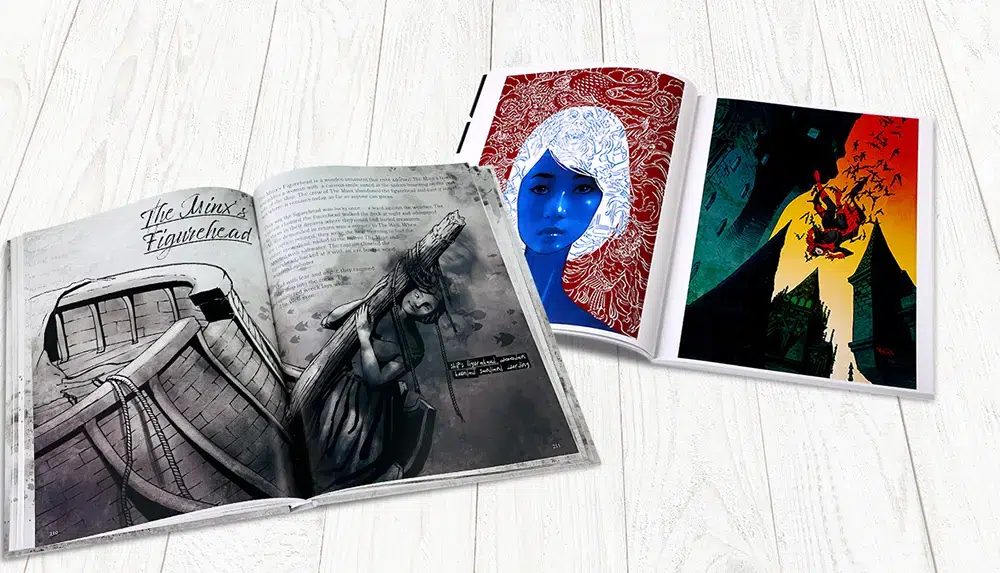
Hardcover vs. Softcover art book
Unlike certain coffee table style books, art books must be opened, read, and viewed! They must therefore integrate high aesthetic standards with utility. We favor the binding types “sewn perfect bound” or “sewn hardcover” for books on art. Perfect binding is another term for softcover binding. Your decision will be influenced by several criteria, including the cost, as well as the design and length of the book. However, both binding techniques produce ideal outcomes, which invariably dazzle. Either binding may be opened flat without causing harm to the spine, making them excellent for perusing.
Sewn Perfect Bound – We frequently employ this type of binding for custom art books. The internal pages are assembled and printed in groups known as signatures, and are subsequently put together and glued into a wrap-around cover composed of stronger art paper or lightweight cardboard stock. With this choice, you can get a stunning book at a reasonable price.
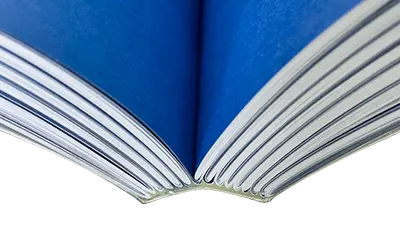
Sewn Hardcovers – The internal pages are divided into signatures to facilitate sewing into the hardcover binding, which involves printing, cutting, and sewing the signatures of the pages together before gluing and sewing them between a hardcover casing. This binding is the strongest and most professional-looking, particularly when you add extra special treatments like custom created dust jackets, slipcases, marker bands, and sewn ornamental headbands; embossed or debossed titles, silky-smooth lamination, gold, silver, copper, or other coated edges; and hot metal foil stamping.
We want to make it simple for you to put together an art book, regardless of the binding option you select. So, if you’d like, you may use either our prepared design templates or ask us to custom build one for you. And request our paper samples catalog from us. We’ll send it to you for free through the postal service.
What's the best size for an art book?
The optimal size for your art book will depend on your work and your target audience. Consider how your book will be displayed and used, as well as the preferences of your potential buyers. Your finest pieces should be displayed in your art publication. They have to lure the viewer into your artistic world and vision. Your art has the greatest potential to be appreciated when it is published in an ample format and faithfully reproduced. We publish most artistic books on superior art paper, wrapped in hardcovers, and ranging in size from 8.5″ x 11″ to 9″ x 12″ or more, though specific dimensions will vary depending on your artwork, the number of photos, the text’s size, arrangement, and alignment. A presentation book for a traveling exhibition might be thinner than a set of landscape-oriented monochrome or full-color reproductions, and a keepsake edition might be much smaller.
Let's talk! We're here to help.
Curating and collating your work, photographing it ready for digitalization, designing the layout and printing your finished art book—or if you want instead to print a high-level portfolio, a show-related catalog of works—for self-publishing, distribution and sale, is often as challenging as it can be rewarding. At QinPrinting, we take immense pride in our unbeatable, personalized customer service and helpfulness as much as our collective knowledge of each aspect of the latest, state-of-the-art printing processes and technology. Get in touch today to discuss your individual needs or to request a no-obligation quote. Just give us a call on +86 21 6538 1716 (bearing in mind potential time zone differences) or shoot us an email to [email protected]. We can’t wait to help you make your custom art book into a masterpiece!






